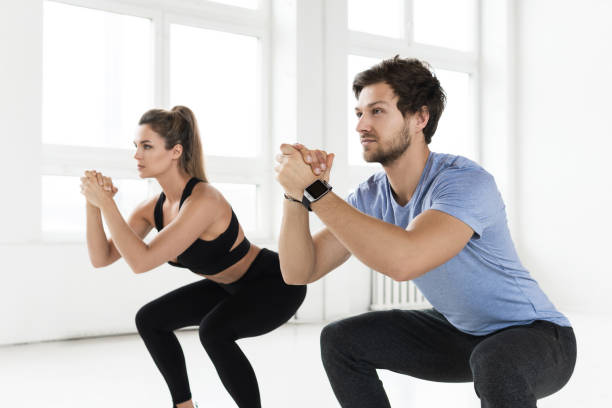My favourite summer activities officially kick off when the calendar turns to May. This is prime time to go running, swimming, cycling, hiking and any other activity that gets me outdoors and moving. My first step is to strengthen my legs.
For summer activities, you can build four leg muscle groups
Quadriceps (glutes), gluteus maximus, hamstrings and calves do the most leg work. Let’s take a closer look at each.
Quadriceps or quadriceps. Also called the thigh muscles and the quads, the quads are a set of four muscles (hence “quad”). They extend your leg at knee level and power all leg actions: walk, stand, run, kick and climb.
Glutes. These are the largest muscles in the body, and they keep you upright. They also help your hips and legs propel your body forward.
Hamstrings. These are three muscles running from your hip to just below your knee. These muscles allow you to move your hips and knees by allowing you to extend your leg straight behind.
Calf. The calf is made up of three muscles. It sits at the back end of the lower leg and extends to the ankle. They help you move your lower leg and foot forward, and propel you forward when running or walking.
Highlight muscle strength and length
Then, start a walking program. Walk for 20-30 minutes each day at a moderate pace. Focus on a particular distance, such as one or two miles. You can also track your steps on your smartphone. It’s not enough to build leg strength. You’ll also reap many health benefits.
There are many leg muscle-building activities, some of which are focused on particular sports or activities. Here’s a 3-move routine to target the four main leg muscles. These can be added to your routine or used as a leg-only workout several times per week. Before you start, consult your doctor if you have mobility issues, particularly knee or ankle problems.
This daily stretching program will help you increase your flexibility and lengthen your legs. It also includes some lower-body stretches.
Dumbbell squats
Muscles: quads and glutes
Reps: 8-12
Sets: 1-2
Rest: 30-90 seconds between sets
Start position: Stand with your feet apart. With your arms extended, your palms inward and your weight in your hands, hold a weight in your other hand.
Movement Slowly bend your hips, knees and hips. Keep your back straight. Pause. Slowly, slowly rise to a standing position.
Tips & Techniques
- Do not round your back or arch it too much
Move without weights.
Make it more difficult: Keep your pace normal. Keep your hands on the handle for a moment. Now, stand quickly.
Reverse lunge
Muscles: quads and glutes. hamstrings
Reps: 8-12
Sets: 1-3
Rest: 30-90 seconds between sets
Start position: Stand straight, with your feet together and your arms extended at your sides. Hold dumbbells.
Move: Stand back on the ball of your left heel, bend your knees and descend into a lunge. Your right knee should be aligned over your right ankle. Your left knee should point towards the floor, but not touching it. To stand, push your left foot off the ground and then return to the original position. Continue the exercise by stepping backwards with your right foot and lunging on the opposite side. This is one repetition.
Tips & Techniques
- When you lower into the lunge, keep your spine straight.
- Do not lean forward or back.
- Bend your knees and lower your back to the ground. Keep the thigh parallel to the floor.
Do lunges with no weights.
Make it more difficult: Step forward and do lunges. Or, use heavier weights.
Calf raises
Calves: muscles worked
Reps: 8-12
Sets: 1-2
Rest: 30 seconds between sets
Start position: Stand with your feet flat upon the floor. To balance, hold on to the backrest of a chair.
Move: Lift your feet as high up as you can to the top of your feet. Hold for a moment, then slowly lower yourself.
It’s easier than you think: Keep your heels lower on the ground.
Do one-leg calf raises. To do each leg, place one foot behind the other and then raise your feet on the ball of the foot. You can also do calf raises while sitting in a chair.

